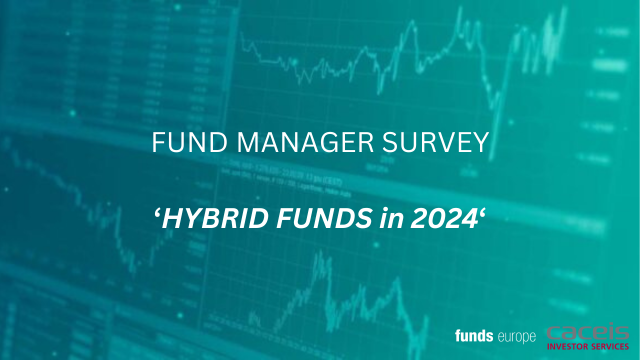Maxime Aerts of FE fundinfo delves into ESMA’s ambitious data strategy, outlining its potential to reshape EU finance.
In what could be seen as a pivotal moment for the European financial landscape, the European Securities and Markets Authority (ESMA) unveiled its long-awaited data strategy for the years 2023-2028 in June 2023. A comprehensive roadmap, it signifies a bold leap forward, with a dual focus on streamlining procedures and fortifying user protection.
At the heart of this strategy lies the European Single Access Point (ESAP), a centralised repository for financial data that promises to revolutionise the way financial information is accessed and overseen throughout the European Union (EU).
ESMA’s mission is clear: to simplify and safeguard. To realise these goals, ESMA has set its sights on the ESAP, a game-changing initiative that will simultaneously empower regulatory oversight and democratise access to financial information for the public. This audacious venture promises to reshape the EU’s existing supervisory model.
One of the cornerstone changes revolves around standardisation.
ESMA is spearheading the charge for the harmonisation of reporting requirements, thereby establishing a level playing field for supervision across the EU. This harmonisation effort is reinforced by the introduction of new Regulatory Technical Standards (RTS), with UCITS and AIFMD-related standards already on the horizon. The future of financial reporting hinges on the seamless exchange of data between supervised entities, local National Competent Authorities (NCAs), and ESMA, facilitating real-time supervision.
The introduction of ESAP will also grant the public access to financial data, disrupting the traditional way of obtaining information through costly data vendors. This shift is set to democratise access to financial information, ushering in a new era of transparency and accountability.
The reverberations of ESMA’s data strategy will touch numerous stakeholders in the financial sector. Local NCAs must evolve their data collection methods, adapt their communication channels and formats, and bolster their capacity to manage structured data. Furthermore, they will need to establish effective communication pathways with ESAP to expedite information exchange.
Supervised entities, too, will undergo substantial changes. They must prepare for the adoption of new reporting requirements, encompassing content, format, channel, and recipient, which could be either the NCA or ESMA directly, contingent on ESMA’s decisions. In anticipation of real-time supervision, they should gear up for more frequent and potentially continuous information disclosure.
The implementation of ESMA’s data strategy brings forth a landscape of challenges and opportunities.
So, what are the challenges?
The first challenge revolves around the digitisation of reporting data. The financial sector is confronted with the formidable task of digitalizing all data and workflows related to reporting in order to conform to the new standards. This transition calls for substantial investments in technology and infrastructure.
The second challenge involves the establishment of a network of digital channels. The industry must actively build a network of digital channels across the EU to ensure the seamless exchange of data and real-time reporting.
The next challenge pertains to information confidentiality. Striking a delicate balance between transparency and confidentiality presents a distinctive challenge, given that not all supervision-related data can be shared in real-time due to its integration with specific NCA activities and processes
Last but not least, the final challenge revolves around the security of information. The industry’s shift towards cloud-based solutions brings to the forefront genuine security concerns. With the majority of leading cloud service providers being US-based, they fall under the jurisdiction of the Cloud Act, which permits US authorities to access data under specific circumstances. This scenario raises significant questions about data security, potentially warranting the establishment of regulations for EU-based cloud providers or the exploration of a sovereign cloud model.
However, with those challenges come opportunities
The first of these opportunities is the possibility of achieving multi-jurisdictional oversight. For supervised entities, ESAP presents a remarkable potential to obtain a comprehensive, multi-jurisdictional overview of their activities, data, and disclosures, all within a single platform.
This streamlined approach holds the promise of improving transparency, ensuring compliance, and enhancing operational efficiency. Simultaneously, NCAs will gain access to information that is not domestic in origin, effectively addressing a recognized gap in the existing cross-border distribution model. The potential for enhanced transparency is another key aspect. ESMA’s data strategy serves as a catalyst for improved transparency and accountability, benefiting not only financial institutions but also the broader public. Providing access to real-time financial data not only fosters trust but also encourages responsible financial practices.
Overall, ESMA’s data strategy for 2023-2028, anchored by the creation of ESAP, signifies a revolutionary transformation of the European financial landscape. While the challenges of digitisation, security, and confidentiality are undeniably substantial, the opportunities for heightened transparency and operational efficiency are equally significant.
As the financial industry adapts to this new era of data access and supervision, embracing innovation and fostering collaboration will be paramount in ensuring the resounding success of this visionary initiative.
Maxime Aerts is head of asset management product strategy, FE fundinfo.
© 2023 funds europe





